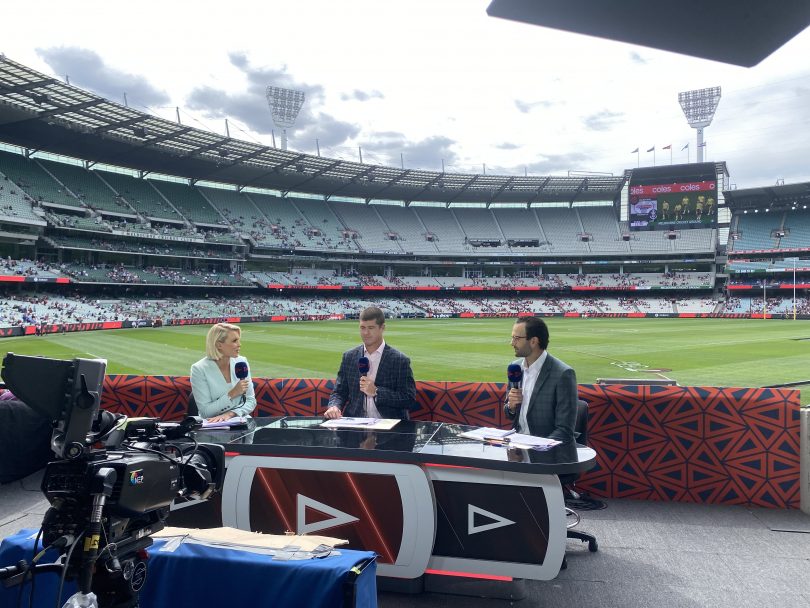Fox Sports presenter Sarah Jones on the importance of having females involved in the media coverage of sports.
The introduction of competitions such as the AFLW had increased the need for female journalists in the coverage of sport, but men still dominate the industry, a study has found.
A Nielson report found that only 10 per cent of live sports broadcasts in Australia were of women’s sports, while the Women’s Leadership Institute Australia 2019 Women in Media Report found that women produced only 12 per cent of sports stories published by Australia’s major news outlets between 2018 and 2019.

Fox Sports presenter Sarah Jones. Image Source: Fox Sports
But, Fox Sports presenter Sarah Jones said media exposure of women’s competitions was expected to grow as leagues develop their own identities away from their male counterparts, and they would therefore need to increase the number of female sports journalists.
“We’ve made massive inroads in the last five years and I think that’s only going to improve. I mean, if you look at the AFLW compared to AFL, the AFL has been around for over 100 years; it has a long-established broadcast and is a very well-run competition,” Jones said.
“Now, the AFLW is broadcasted and well ran, but it doesn’t have that history that the AFL men’s does. It’s going to take time to build, and we can’t expect the AFLW to get the same coverage today as the men do, but we can hope that one day it will.”
Jones, who has worked at Fox Sports for 20 years, said the addition of elite female competitions had increased the need for more sports journalists, consequentially increasing the number of women in the industry.
“AFLW has meant a lot of women have been able to have jobs and opportunities in the media that maybe they wouldn’t have got if it was just the men’s (competition). I think that will only grow as the AFLW competition grows,” Jones said.
“But I wish there was an AFLW around 10 to 20 years ago when I was younger because I think I would have been able to get opportunities a little quicker because there would have been more roles to fill and a greater acceptance of women’s place in the media.”
The increase in jobs in the sports media industry has provided females such as Jones and Channel Seven’s Daisy Pearce opportunities to hold essential roles in broadcasting men’s and women’s football.
The promotion of females not only proved that both genders have a role within the coverage but has also shaped the audience’s expectation around female’s involvement, especially in the televising of AFL.
“I think now if you were to have an entire weekend football coverage and not see a female broadcasting, you would be like, ‘what’s going on here?’,” Jones said.
“I think it would be it would be quite obvious for a lack of female involvement if they weren’t there, which is great. Now, we expect females to be involved in the male’s broadcast.”
Jones said the introduction of females into critical media roles has resulted in a better representation of the audience through those who are on screen.
“It’s not like we’re only broadcasting to men. Women want to see themselves reflected in the broadcast…So if they turn on the television and all they see are men, then that’s not really reflective of their football experience,” Jones said.
“Whereas if they turn on and there’s a woman who’s talking about football. Well, that feels more comfortable for them because that’s what they know and that’s what they understand to be true – that women love sport just as much as the blokes do.”
Fox Sports is just one organisation highlighting their support of females with the introduction of FOXW, a pop-up channel dedicated to covering various women’s sports, and the regular promotion of female talent across all sporting codes, with many free-to-air channels following in their footsteps.
Feature Image: Sarah Jones, Jonathon Brown and Jordan Lewis cover an AFL game for Fox Footy at the MCG. Image Source: Sarah Jones.







